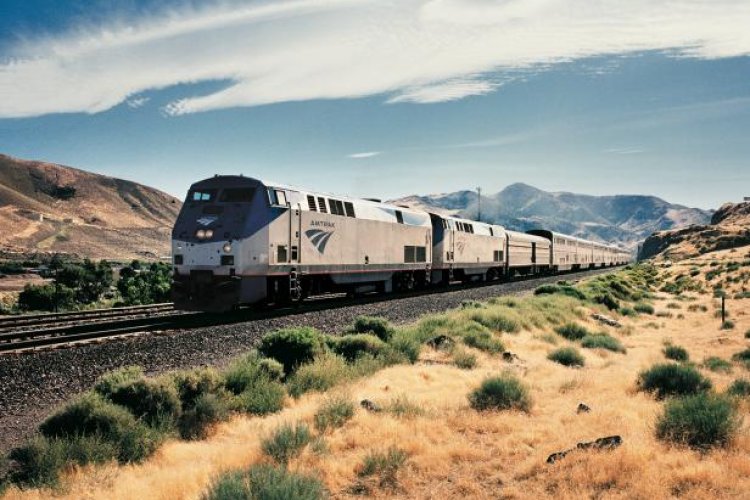[ad_1]
Few modes of transportation display the grandeur of the vast American land, and her tapestry of culture and history, like train travel can. From the days of the wild west to the present, the romance of the rails has captured imaginations and united the country. Our latest travel report explores this magical experience, taking an excursion spanning America’s oldest named train route: the Sunset Limited.
The Sunset Limited’s inaugural trip took place in November of 1894 along the Sunset Route (originally named the Sunset Express in 1874). The route, originally operated by the Southern Pacific Railroad, took travelers on a journey from New Orleans to San Francisco, with many stops still encompassed in the present line. When Amtrak arrived on the scene, the line eventually extended to Orlando, though the company suspended the Florida, Alabama and Mississippi connection following Hurricane Katrina.
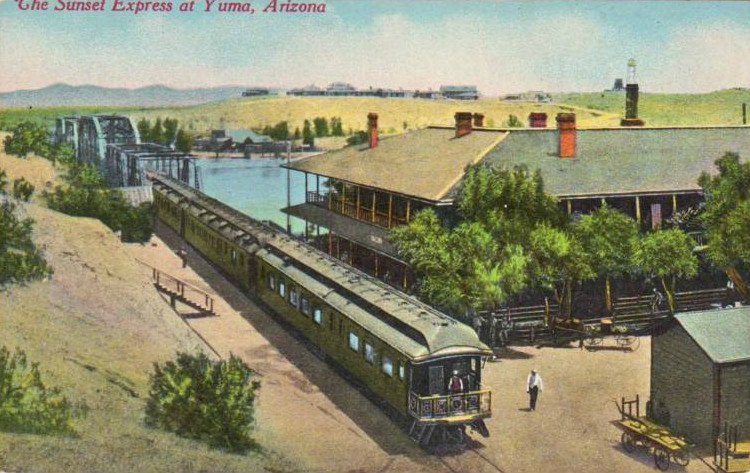
Above: The Original Sunset Limited traveling through a small town on the edge of the American wilderness. Below: The Pride of Texas rail car.
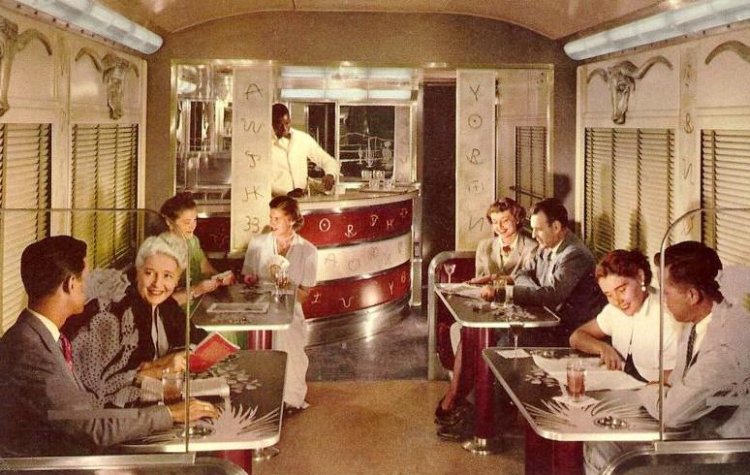
Nevertheless, the experience remains an unparalleled nirvana for globetrotters, drifters, wild west fanatics and rail fans alike.
The Sunset Limited’s current journey begins in New Orleans, Louisiana, an eight hour journey by car from Central Florida. Before boarding the train, travelers will find the city filled with plenty of fun things to offer.
Named after the Duke of Orleans who reigned as Regent for Louis XV from 1715 to 1723, the New Orleans’ rich history and vibrant cultural fabric whisk visitors away to days gone by, conjuring up images of indomitable American legends as diverse as Andrew Jackson, Huey P. Long and Louis Armstrong. The city’s restaurants and architecture plead for a book of their own. Our short stay before riding the rails out west involved several tastings at some of the city’s finest dining establishments― Antoine’s, Galatoire’s, Cafe Du Monde and Commander’s Palace. Another facet of the New Orleans experience that can’t be missed: a stop at the World War II museum in the downtown area, where visitors can learn about the war and pay respect to the memory of the America’s Greatest Generation.
After finally boarding the train, the Crescent City seemed a world away from the deserts of the southwest and our final destination, Tucson, New Mexico. And yet, in just a matter of 24 hours, the marshlands, bayous and forests of the east would transform into dry plains and arid desert. At exactly 9 AM, we pulled out of the station powered by the industrial muscle of the train’s two great iron horses. Our Superliner room bestowed all the comforts of home and the train stewards took our reservations for lunch and dinner in the diner.
Most passengers on the Sunset Limited we discovered were not drifters or travelers stricken with wanderlust or even acolytes of rail travel. Indeed, the majority of travelers chose the train out of necessity for short trips between cities rather than driving or flying.
The train picked up steam after crossing the Huey P. Long bridge (named for the state’s most iconic Governor), and the journey kicked into full gear. Soon the Sunset Limited arrived in Schriever, LA, serving as the first stop on this epic American adventure. Eponymously dubbed so in honor of railroad official John George Schriever (1844-1898), who opened a rail line to Houma in the 1870s.
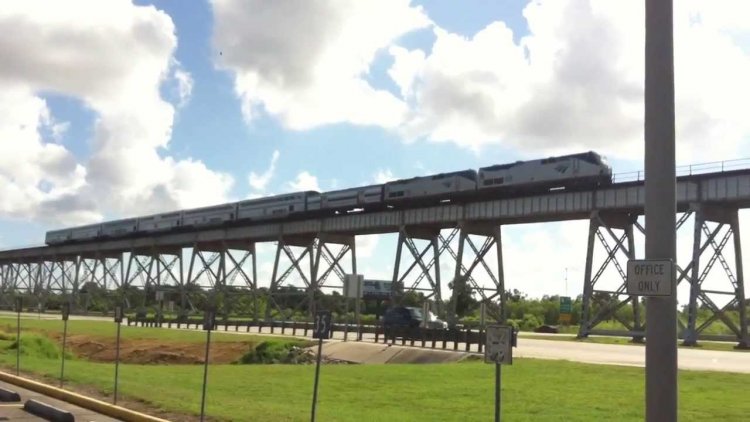
Above: The Governor Huey P. Long Bridge.
The train’s second stop, New Iberia, dates from mid-1779, when a group of some 500 Malagueños colonists from Spain, led by Lt. Col. Francisco Bouligny, came up Bayou Teche and settled around what became known as Spanish Lake. In the Civil War, the town was one of the few in the south occupied by Union troops under the command of General Nathaniel P. Banks.
As the train chugged along, the terrain gradually gave way to more forests, arable land and crawfish farms in the form of square and rectangular ponds.
Next on the schedule: Lafayette, LA. The city’s namesake, Marquis de Lafayette, remains an endearing figure in American and French history alike. The unofficial capital of Cajun Louisiana, Lafayette contains many intriguing points of interest and exhibits such as the house of Louisiana’s first Democratic governor, Alexandre Mouton as well as replicas of historic Cajun communities.
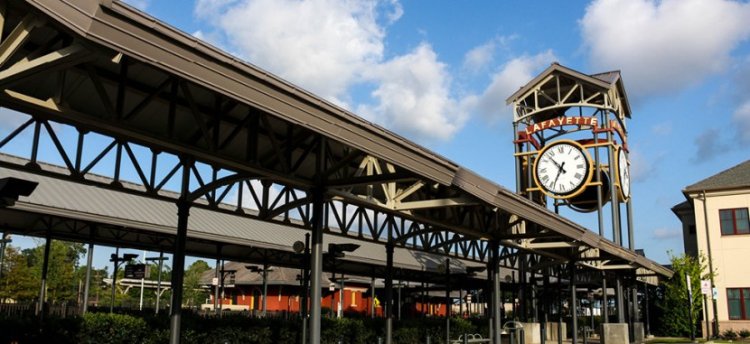
Pictured: The Lafayette, Louisiana train station.
The train’s final stop in Louisiana: Lake Charles. Founded by merchant and tradesman Marco Eliche, a Sephardic Jewish trader of either Basque-Spanish or Venetian-Italian origins, residents originally referred to the town as Charleston, LA when just a small outpost. In 1910, the Great Fire of 1910 devastated much of the city, though Lake Charles soon rebuilt, grew and expanded in the twentieth century. The Charleston Hotel was completed in 1929 and can still be visited today.
The Sunset Limited’s first stop in Texas (and last before Houston) is the town of Beaumont, founded by Bobby and Nancy Tevis who settled on the west bank of the Neches River and developed a farm. Though the village is most famous for being a catalyst in the oil boom, the town’s history also contains a rich tradition of rice farming, with the Beaumont Rice Mill being founded in 1892 by Joseph Eloi Broussard, the first commercially successful mill in Texas.
Moving onward from Beaumont toward Houston, a train attendant announced our lunch and passengers made their way to the dining car. During normal times, Amtrak’s long-haul routes not only include free meals for sleeper passengers, but also white table cloths, china and freshly cooked meals by skilled chefs. Though the company suspended fresh meals and traditional dining due to COVID-19, the regular service will once again resume this summer. In the meantime, we brought our own plates and tablecloth to better enjoy the experience.
The pre-packaged meals (Flexible Dining) currently served may not be as suculent as the train’s normal menu, but they filled their role by filling our stomachs. Among the best items served were the braised beef and shrimp. The traditional menu can be found here. A complimentary glass of wine also comes with each sleeper car ticket.
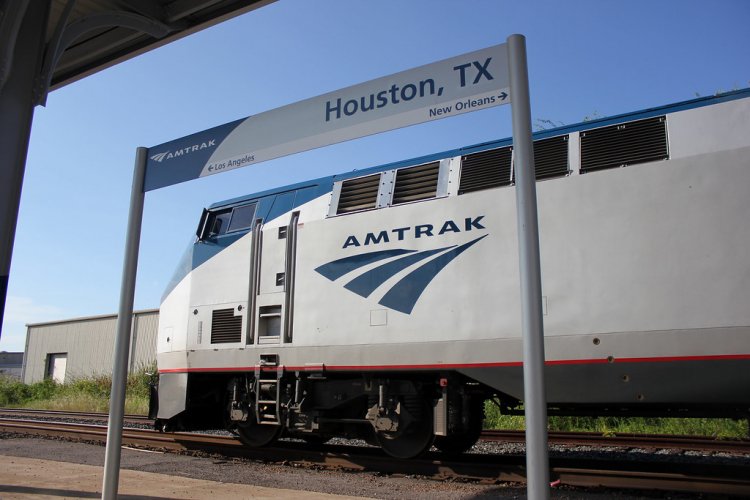
Above: Houston, Texas’ Amtrak station.
Arriving in Houston, the train stopped for an hour long break, perfect for taking in the sights of the downtown area or meeting up with a local friend. Just don’t wander too far! Home to NASA’s Johnson Space Center and America’s largest megachurch, Lakewood, city founders Augustus Chapman and John Kirby named the town in honor of Texas President Sam Houston, a founding father of the republic turned state.
With the train’s exit from Houston, we were San Antonio bound amidst darkening Texas skies. A two hour lay-over offered yet another chance to discover one of Texas’ most beloved destinations at night. During the stop-over, curious travelers and night-owls can meander throughout San Antonio’s River Walk, visit the Alamo and Landry’s Chart House restaurant at the Tower of the Americas.
Next, it’s off to Del Rio, Texas, a small desert border town near the Rio Grande, home to Laughlin Air Force Base, though the dead of night obscures most of the sights along the way. Waking up late on Amtrak after a long night exploring San Antonio meant no dining car breakfast and a one way ticket to lunch-time. Soaking up the riveting desert views over lunch, the train pushed forward toward the Pecos River while trailing the border. Passengers may also gaze out at the magnificent panoramic views of Mexico and the United States while crossing high above Lake Amistad, a fresh water reservoir established by the United States and Mexico during the presidency of President Nixon.
Just a short distance from Del Rio nearby the Pecos lies the little town of Langtry, Texas, best known for the infamous, wild west Judge Roy Bean, whose slogan, “The Only Law West of the Pecos,” later became popularized in film and song. The town took its name from British socialite and performer Lillie Langtry, a favorite of Bean’s. For those with a flare for the wild west, the location is a must-see.
Sanderson and Alpine, the final two stops before reaching El Paso, also share a rich history and a multitude of sights to see. Settlers founded Sanderson in 1882 and the town served as a division point for the Southern Pacific Railroad, where refueling and crew changes on its main transcontinental route took place. Crew changes still take place near this location, though the main refuleling spot in Texas sits just outside San Antonio. Mohair and wool production on surrounding ranches formed a significant part of the economy.
At the time of Alpine’s settlement, cattlemen used the area as a campsite while tending their herds. Between 1878 and the spring of 1882, a town of tents was created by railroad workers and their families.
The railroad needed access to water from springs owned by brothers named Daniel and Thomas Murphy, so it entered into an agreement with the Murphys to change the name of the section and settlement to Murphyville in exchange for a contract to use the spring. In November 1883, the Murphys registered a plat for the town of Murphyville with the county clerk of Presidio County.
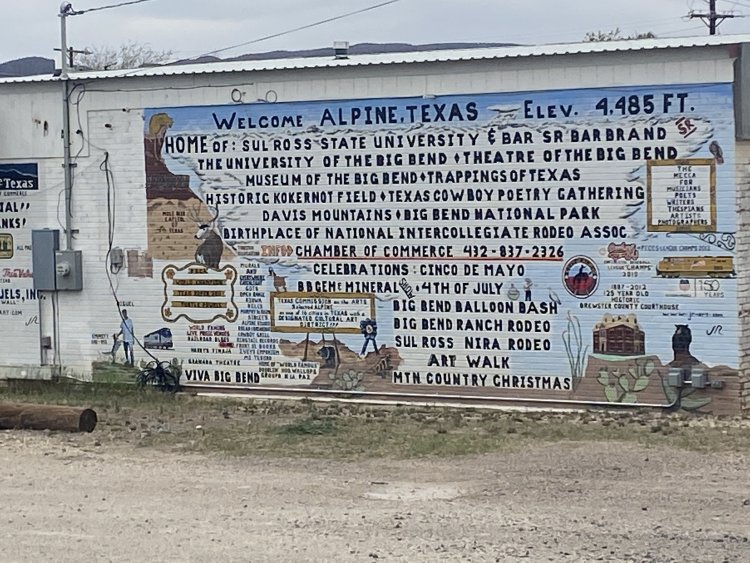
The town’s name was changed to Alpine on February 3, 1888, following a petition by its residents. At this time, a description of the town mentioned a dozen houses, three saloons, a hotel and rooming house, a livery stable, a butcher shop, and a drugstore, which also housed the post office.
Today, while visitors of Alpine may take in the sights, most come to visit nearby Big Bend National Park which offers 801,163 acres of river canyons, desert & mountains with abundant wildlife & outdoor activities. The desertification of the landscape continues in the trains push toward El Paso, as visions of cowboys and pioneers flash across the imagination. Hundreds of books, songs and films include El Paso as their backdrop, though perhaps none more renown than Marty Robbins’ song “El Paso” about a young gunfighter in love with Felina, a Mexican girl in a local saloon. The most famous film of the same name starred John Payne (yes, that’s spelled right) who gained fame in Miracle on 34th Street as Kris Kringle’s attorney.
Before the train leaves El Paso, passengers may choose to take a brief break outside to get some fresh air, though depending on the time of year, some experiences can be more pleasant than others. The Sunset Limited embarks on its journey toward the West Coast within 20 minutes, passing within just a few feet of the border wall where Customs and Border Patrol vehicles keep a watchful guard (albeit with strained resources). Before the train pulls off, passengers might be able to catch “the taco lady” who usually sits adjacent to the historic station selling her hearty Mexican cuisine and delicious libations.
Moving north, away from the border, the tracks lead their way on a steady course through the deserts of New Mexico. Sunset on the Sunset Limited might be one of the most memorable travel experiences in the world. As daytime fades and night takes hold, the brilliant radiance of the sun’s beams turn from the hot white of day to the orange blaze of dusk. Shadows cascade between the backdrops of mountains and desert, treating the eyes to a picturesque setting custom made for that special romantic evening or simply a memorable cocktail hour.
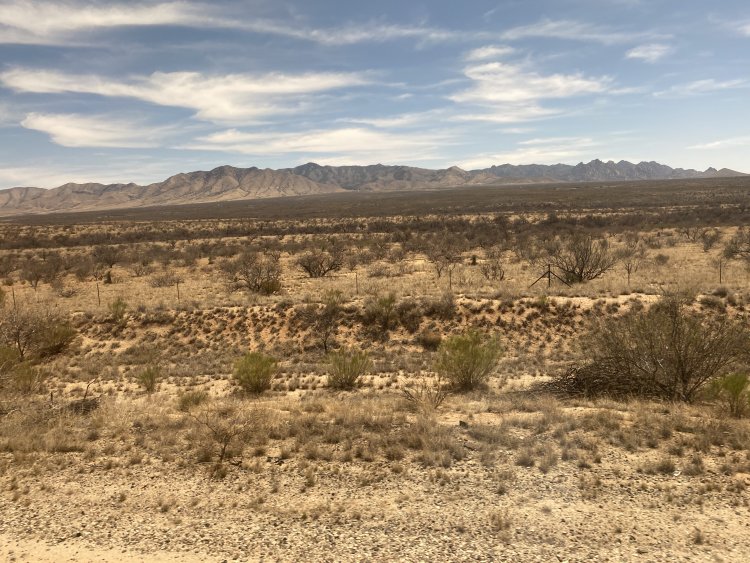
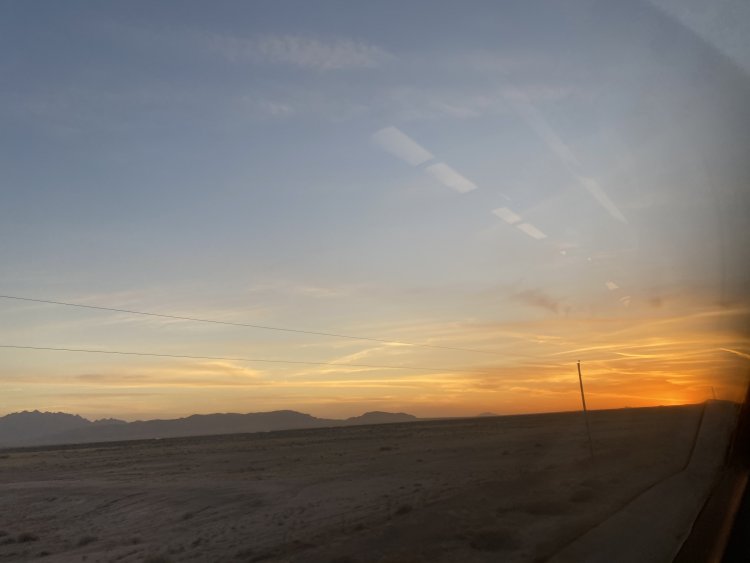
As the Sunset Limited chugs onward and night falls, the train rumbles through the vast landscape of New Mexico, stopping at the towns of Deming and Lordsburg, a part of the Gadsden Purchase of 1853. Deming’s fame derives from the Indiana Jones franchise, where directors partially set one of the movies’ backrdrops. Lordsburg gained recognition for being the birthplace of the writer of New Mexico’s state song, “Oh Fair New Mexico,” written by resident Elizabeth Garrett, the blind daughter of famed sheriff Pat Garrett.
Lordsburg was founded in 1880 on the route of the Southern Pacific Railroad. The Continental Divide Trail starts at the Crazy Cook Monument and travels through Lordsburg. Local lore is that Billy the Kid washed dishes in Lordsburg hotel kitchens such as the Stratford Hotel, and La Fonda, the historic “inn at the end of the Santa Fe Trail” during his teenage years.
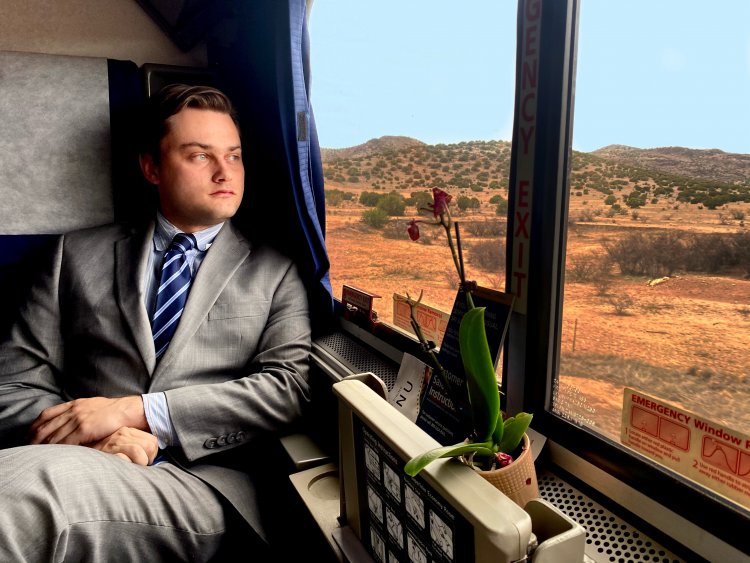
The last stop before Tucson, our destination, in Arizona is Benson, a stop best remembered for its proximity to the infamous town of Tombstone, AZ. Visitors fascinated by the west will be starstruck by the city, known world round for the legendary “Shoot-Out at the O.K. Corral.” Exhibits at the Tombstone Courthouse State Historic Park include a replica gallows. On historic Allen Street, the O.K. Corral outdoor theater re-enacts an 1881 cowboy gunfight. Resident ghosts are said to haunt the bullet-riddled Bird Cage Theatre and outlaws reside among the local townsfolk buried at the 1878 Boothill Cemetery.
On a return trip, passengers may also admire the many small towns and ghost towns along the way through Arizona and New Mexico. One such town – the little village of Cochise, near Wilcox, where visitors and passersby recall the memory of the wild west Cochise Hotel and the charming country music of late resident Rex Allen, who narrated dozens of Disney films and songs, including the famed tune “A Great Big Beautiful Tomorrow.”
Once in Tucson, the train refuels as passengers disembark. The Hotel Congress directly across the street makes the perfect stop-over on a pilgrimage to nearby Saguaro National Park, or further destinations such as the Grand Canyon. Built in 1919, the central location allows a short walk to the train museum next door and two larger-than-life statues of Doc Holliday and Wyatt Earp.
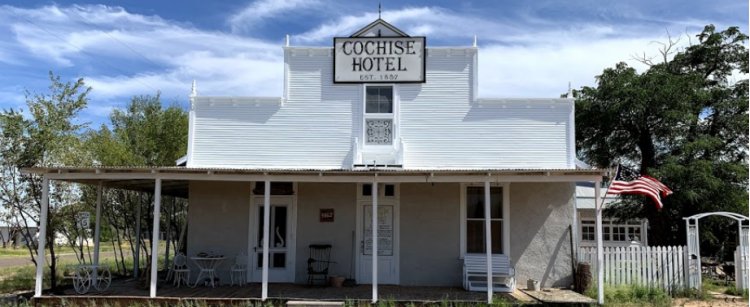
More than just a means of travel from point A to point B, America’s long-haul rail routes imbue a sense of awe in every traveler, and kindle a fire of wonder within the soul. This one-of-a-kind trek can only happen right here in the USA. Despite the cost and planning involved, you’ll find no room for regret on this truly iconic American adventure!
[ad_2]
Source link

